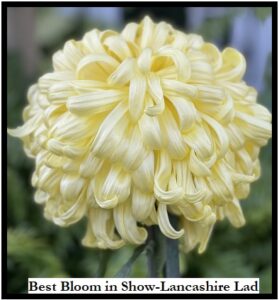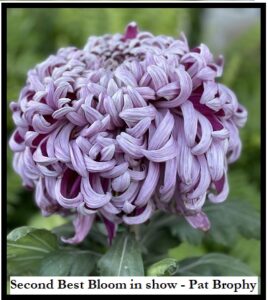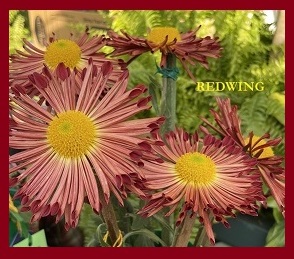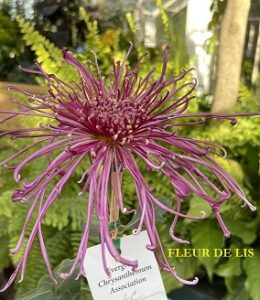FEBRUARY TO DO LIST.
Continue taking cuttings throughout February and into March for some. A few early February cuttings can be available for the March/April Plant sales (Members sale at the March and April meetings and the public plant sale in April). Most February and March cuttings should be of the early English and American varieties. Late Decoratives, Classes 4, 5, 14 and 15 should be started primarily in February. Take cuttings for yourself and for the plant sale.
Most varieties in classes #1, #2 and #3 should have been started by the end of January. However here are some varieties that can be successfully grown from February cuttings. #1 & #2’s, Lundy, Yellow Lundy, David Dando, Ralph Lambert, Yellow Ralph Lambert, Athabasca, Harry Gee, Jane Sharpe and Seychelles. #3’s Len Hall, Salmon, Primrose and Yellow Fairweathers, Stockton and Heather James.
Cuttings started directly in the cutting bed media should not require fertilization before potting on. If you are starting in the cross bottom bands or 2” clay pots, fertilizer should be added after 3 to 4 weeks as these cutting generally require 5-6 weeks before potting on. Start fertilizing once a week beginning with the 4th week. Use an early Mum fertilizer, Peters 9-45-15 or Plant Marvel 12-45-10 (One Tsp/Gal once a week)
Potting on:
Most growers are using the soilless M&R potting mix sold by the club. In general no additives are required for the early pottings (2” and 4” pots); however some growers like to add some special ingredients. For instance Alfalfa meal or pellets is a good stimulant that can be added. Avoid adding Bone meal, as you will probably find fungi growing on the top of your pots due to too much potassium.
– Pot the mums directly from the cutting beds into 2” pots, or from the starter bands or pots into 3” or 4” pots.
– Use new pots, or wash previously used pots with a mild bleach solution (Clorox) to kill moss and eliminate the viruses. When bleach is used thoroughly rinse pots in fresh water to get the bleach out of the pot.
– Clay pots are recommended for the 2”, 3”, 4” and 6” pottings, as the clay pots will dry out better than plastic after watering. This is especially important during the cool March and April days.
– Pot on from cutting beds when the roots are ½ to ¾ in. long (Typically 4 weeks) into 2 ½” or 3” pots.
– Pot on from cross bottom bands, or pots when roots are growing thickly out of the pots or bands (Typically 6 weeks). Do not compact the mix!
– Place the newly potted mums out of the light or under the bench for 2-3 days to stimulate root growth.
Continue taking cuttings throughout February and into March for some. A few early February cuttings can be available for the March/April Plant sales (Members sale at the March and April meetings and the public plant sale in April). Most February and March cuttings should be of the early English and American varieties. Late Decoratives, Classes 4, 5, 14 and 15 should be started primarily in February. Take cuttings for yourself and for the plant sale.
Most varieties in classes #1, #2 and #3 should have been started by the end of January. However here are some varieties that can be successfully grown from February cuttings. #1 & #2’s, Lundy, Yellow Lundy, David Dando, Ralph Lambert, Yellow Ralph Lambert, Athabasca, Harry Gee, Jane Sharpe and Seychelles. #3’s Len Hall, Salmon, Primrose and Yellow Fairweathers, Stockton and Heather James.
Cuttings started directly in the cutting bed media should not require fertilization before potting on. If you are starting in the cross bottom bands or 2” clay pots, fertilizer should be added after 3 to 4 weeks as these cutting generally require 5-6 weeks before potting on. Start fertilizing once a week beginning with the 4th week. Use an early Mum fertilizer, Peters 9-45-15 or Plant Marvel 12-45-10 (One Tsp/Gal once a week)
Potting on:
Most growers are using the soilless M&R potting mix sold by the club. In general no additives are required for the early pottings (2” and 4” pots); however some growers like to add some special ingredients. For instance Alfalfa meal or pellets is a good stimulant that can be added. Avoid adding Bone meal, as you will probably find fungi growing on the top of your pots due to too much potassium.
– Pot the mums directly from the cutting beds into 2” pots, or from the starter bands or pots into 3” or 4” pots.
– Use new pots, or wash previously used pots with a mild bleach solution (Clorox) to kill moss and eliminate the viruses. When bleach is used thoroughly rinse pots in fresh water to get the bleach out of the pot.
– Clay pots are recommended for the 2”, 3”, 4” and 6” pottings, as the clay pots will dry out better than plastic after watering. This is especially important during the cool March and April days.
– Pot on from cutting beds when the roots are ½ to ¾ in. long (Typically 4 weeks) into 2 ½” or 3” pots.
– Pot on from cross bottom bands, or pots when roots are growing thickly out of the pots or bands (Typically 6 weeks). Do not compact the mix!
– Place the newly potted mums out of the light or under the bench for 2-3 days to stimulate root growth.
Care:
– Shelter mums in the greenhouse, cold frame, or other shelter (Kitchen table or south facing window).
– Temperature should be between 50 and 60 degrees.
– Glass overhead will help keep mums from getting leggy.
– B-9 is a good growth retardant that tends to help plants from getting too leggy. It is available through the club. If you choose to use B-9 it should be applied at the time of potting on and again at or near pinch time. Caution: Do not use B-9 on plants that tend to naturally grow short: i.e. all the Fairweathers, all the Alexis, Port Stanley and others.
– Plants will remain in this first potting for 4-6 weeks until they have produced a noticeable root ring around the bottom of the pot. Don’t be afraid to knock the root ball out of the pot after several weeks and examine the roots.
– Fertilize with 9-45-15, or 12-45-10 beginning the 4th week.
(1 Tsp/Gal once a week) These fertilizers are available through the Club at the monthly meetings.
– Shelter mums in the greenhouse, cold frame, or other shelter (Kitchen table or south facing window).
– Temperature should be between 50 and 60 degrees.
– Glass overhead will help keep mums from getting leggy.
– B-9 is a good growth retardant that tends to help plants from getting too leggy. It is available through the club. If you choose to use B-9 it should be applied at the time of potting on and again at or near pinch time. Caution: Do not use B-9 on plants that tend to naturally grow short: i.e. all the Fairweathers, all the Alexis, Port Stanley and others.
– Plants will remain in this first potting for 4-6 weeks until they have produced a noticeable root ring around the bottom of the pot. Don’t be afraid to knock the root ball out of the pot after several weeks and examine the roots.
– Fertilize with 9-45-15, or 12-45-10 beginning the 4th week.
(1 Tsp/Gal once a week) These fertilizers are available through the Club at the monthly meetings.




